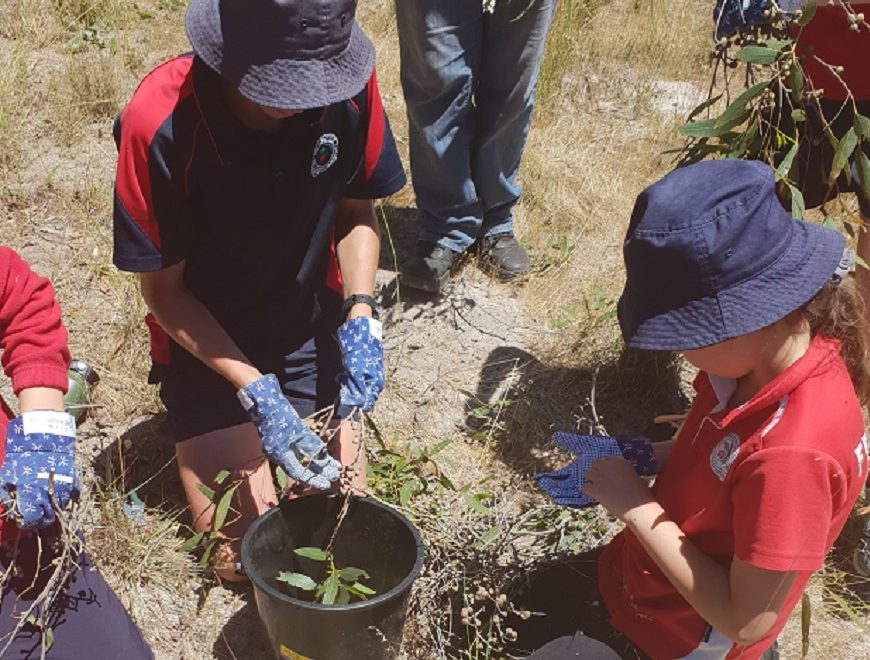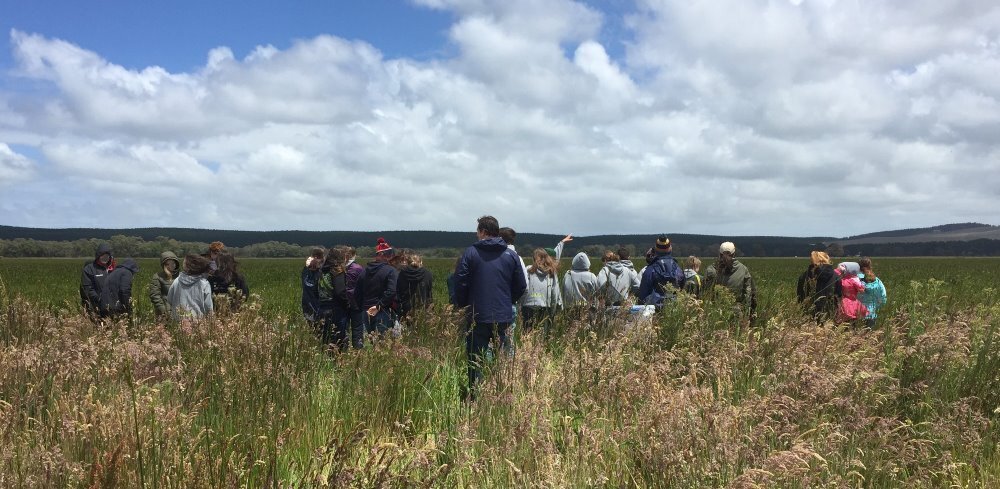NGT’s environmental education around the Limestone Coast: water bugs, scorpions, stingybarks, and more!
Over the past month we’ve been busy with a whole heap of environmental education events around the South East, from Eaglehawk in the north to Hutt Bay in the south.
On 5th November, thanks to the support of the Coast Protections Board’s Community Participation Grant, I headed to NGT’s Hutt Bay Wetland with a group of eager participants to explore what aquatic macro-invertebrates (aka water bugs) are living in the wetland.
Aquatic macro-invertebrates range in their sensitivity to wetland health. Some species are generalists and can be found in most bodies of water, others are more sensitive and have very specific requirements. The abundance and diversity of water bugs can help determine how healthy a wetland is. Aquatic macro-invertebrates are food for a variety of wetland inhabitants and many, such as dragonfly nymphs, are the early life stages of invertebrates whose adult forms live out of the water.
On this day, we found a variety of aquatic macro-invertebrate species, as well as at least three species of tadpoles, plus fish, and yabbies. It was great to see participants, including first-time visitors to Hutt Bay, enjoying themselves and getting involved in something different!

Another recent activity took place at Eaglehawk Waterhole where we were joined by Frances Primary School students. The school has been involved for many years in BirdLife Australia’s Kids Helping Cockies project, supporting the conservation of the endangered SE Red-tailed Black Cockatoo. The excursion was a chance for the students to see some RTBC habitat after learning so much about them in class and at other sites.
First up, Sheryl and I took the students on a butterfly survey, looking in particular for the rare Fiery Jewel. The Fiery Jewel is rarely seen but has been recorded at Eaglehawk in November/December, so it was the perfect opportunity to spot it again. However, the weather was against us this day; due to strong winds and cloud cover, we didn’t find any butterflies. The students did however find our insect pitfall traps and were interested to find out how they’re used in monitoring (mostly of ants).
We then headed to one of the property’s established roofing tile grids to check out what reptiles and other animals we might discover under the tiles. We found a variety of skinks and a number of scorpions – the scorpions were a highlight of the day! Did you know that all scorpions glow under black light? Before the excursion we had rigged up a scorpion black light viewer (involving a upcycled cardboard box, a toilet roll, and a torch). This was our first time attempting to show the students this phenomenon and it worked a treat! Check out this short video to see for yourself how they glow blue.
The main aim of the day was for the students to collect Stringybark seeds to take back to school and propagate. The seedlings gown by the students will be planted next winter at a nearby property as part of the Kids Helping Cockies project, in order to increase the number of food trees for SE Red-tailed Black Cockatoos. Thanks to Bron for having us join you.

Students collecting Stingybark seedpods. Photo: Taylah Martin.
Another series of recent activities relates to the wetland science program that was initiated in 2019 with Grant High School at Mt Burr Swamp with the support of the Limestone Coast Landscape Board. The program, now running for the second time, sees all year 9 science students visit the site to learn and carry out three different methods to assess wetland health. We’ve just completed the classroom visits for this project and are the remaining excursions will be finished off this week.

Over the next few months we’ve got education activities with Newbery Park Primary School and the local home-school network – we’ll update you on those another time. We also have a stack of public events coming up – check out the details here.
The Hutt Bay Wetland Reserve workshop and working bees project is supported by the Coast Protection Board through the Coastal Community Participation Grant.

The science program with Grant High School is supported by the Limestone Coast Landscape Board’s Grassroots Grants program, and is funded by regional landscape and water levies.

